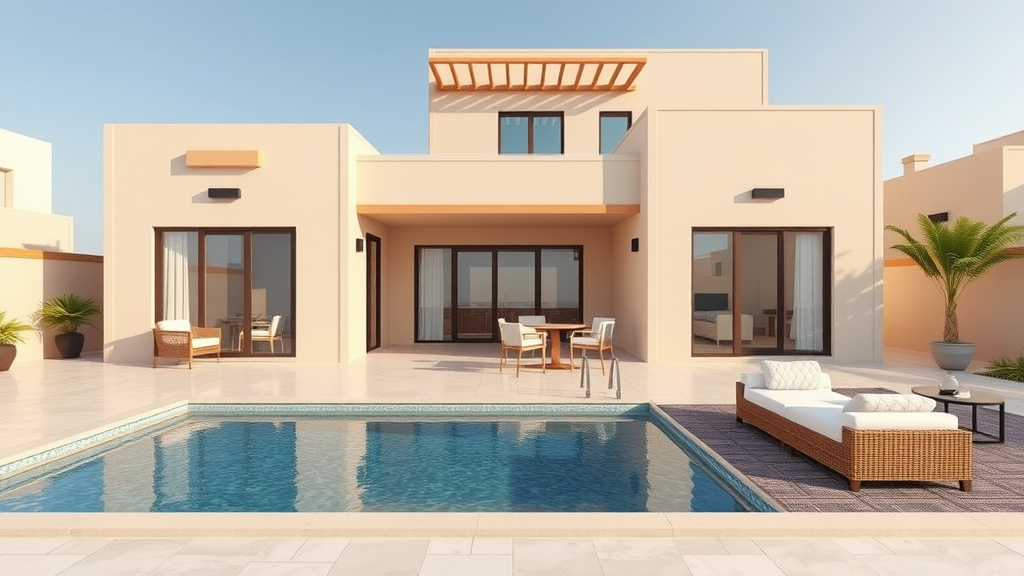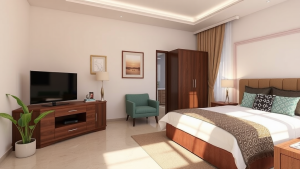Financing solutions for retirees downsizing to smaller homes
As a retiree, downsizing to a smaller home can be a smart and fulfilling choice. It can reduce maintenance costs and simplify life, giving you more time to pursue what you love. However, navigating financing options for this transition can be daunting. Understanding available financing solutions can make the move easier and more efficient.
Understanding the need for financing
Downsizing often involves a blend of selling your current home and purchasing a smaller one. You may have built equity in your home, which can help fund your next purchase. However, it’s essential to know the best ways to manage these finances. Start by evaluating your financial situation, including income, savings, and any debt.
Home equity loans and lines of credit
If you have substantial equity in your current home, a home equity loan or a home equity line of credit (HELOC) are two options worth considering. Here’s how they work:
- Home Equity Loan: This is a second mortgage where you borrow a lump sum amount against your home’s equity. It offers fixed interest rates and a set repayment period, making budgeting straightforward.
- HELOC: This gives you a credit line that you can draw from as needed, rather than receiving all the money at once. This option allows flexibility, especially if you’re uncertain about how much you’ll need for your new downsized home.
Selling your current home
When you downsize, selling your current home is often the first step. The profits from this sale can provide a solid financial foundation for purchasing a new, smaller property. Here are some tips:
- Work with a Real Estate Agent: Find an agent experienced in your local market who can help you price your home correctly and attract buyers.
- Staging: Consider staging your home to make it more appealing. This can lead to a quicker sale and a potentially higher selling price.
- Timing: Pay attention to market trends. Selling in a seller’s market typically yields better returns.
Government programs and assistance
Many states and local governments offer programs designed to assist retirees in purchasing homes. Explore the following options:
- First-Time Homebuyer Programs: Some areas offer incentives for seniors who haven’t purchased a home recently, even if they previously owned one.
- Down Payment Assistance: Look for grants or loans that can help cover down payments or closing costs.
- Tax Benefits: Investigate potential tax breaks or deductions available when buying a smaller home as a retiree.
Reverse mortgages
A reverse mortgage allows you to convert part of your home’s equity into cash without having to sell it. This can be particularly helpful if you want to buy a smaller property but need additional funds. It’s important to note, however:
- The homeowner must be at least 62 years old.
- You must live in the home as your primary residence.
- A reverse mortgage must be paid back when the borrower moves out, sells the home, or passes away.
Conventional mortgages and refinancing
If you’re looking to buy a new home outright, conventional mortgages are still a viable option. Many retirees find that smaller homes come with a lower price tag, making this financing strategy accessible. Here’s what to consider:
- Fixed or Adjustable Rates: Decide whether you prefer stability with a fixed-rate mortgage or flexibility with an adjustable-rate option.
- Comparing Lenders: Shop around for the best interest rates and terms from various lenders to ensure you’re getting the best deal.
Creative financing options
Sometimes traditional financing may not be the best fit. Consider alternative methods:
- Seller Financing: This option allows you to make payments directly to the seller, bypassing banks altogether.
- Lease Options: Renting with an option to buy may be a good way to transition into a new space without a large upfront investment.
Ultimately, the financing solutions for retirees downsizing to smaller homes hinge on their individual needs and situations. By exploring various options and conducting thorough research, you can confidently make a choice that best supports your retirement lifestyle.
Key considerations when choosing a smaller home for retirement
Choosing a smaller home for retirement is an exciting journey filled with new opportunities and lifestyle changes. As you consider this significant step, it’s important to keep key factors in mind. By focusing on your needs and preferences, you can find the perfect place that feels just right for this new chapter of your life.
Location matters
One of the first things to consider is the location of your new home. You want to be close to family, friends, and essential services. Here are some points to evaluate:
- Proximity to family and friends: Being near loved ones can enhance your social life and emotional well-being.
- Access to healthcare: Find a location that offers easy access to hospitals, clinics, and specialists.
- Community amenities: Check for nearby parks, shopping centers, and recreational facilities.
- Weather: Consider the climate you prefer and how it will affect your lifestyle.
Budgeting for your new home
Your budget will play a crucial role in finding the right smaller home. Understanding your financial situation will help you make informed decisions. Here’s what to consider:
- Sale of your current home: Estimate how much you will gain from selling your existing property.
- Costs of the new home: Include purchase price, closing costs, and property taxes.
- Ongoing expenses: Factor in utilities, maintenance, and homeowners association fees.
- Additional expenses: Don’t forget about costs like moving services and home improvements.
Home features and layout
The design and layout of your new home are essential for comfortable living. Think about the following:
- Accessibility: Look for homes with single-story layouts or features like ramps if mobility is a concern.
- Size: Determine the amount of space you need for your belongings without feeling cluttered.
- Functional spaces: Ensure there’s enough room for hobbies or interests you want to pursue in retirement.
- Natural light and ventilation: Choose a home that feels bright and open to lift your spirits.
Future-proofing your space
As you plan for retirement, think about the future and how your needs may evolve. Considering the long-term usability of your home is vital. Here are ways to future-proof your space:
- Adaptability: Look for homes that can be easily modified as your needs change over time.
- Low maintenance: Opt for materials and designs that require minimal upkeep to keep your environment stress-free.
- Outdoor living: Consider having a manageable outdoor space that allows for gardening or relaxation.
- Technology: Think about integrating smart home features that enhance safety and convenience.
Maintenance and lifestyle
Downsizing often translates to a simpler lifestyle, and maintenance should reflect that. Take into account:
- Property size: A smaller home often means less time spent on upkeep.
- Gardening: Decide whether you want a yard to manage or if a balcony or no outdoor space is better.
- Community living: Explore options in active adult communities that offer amenities with lower maintenance.
Emotional readiness
Transitioning to a smaller home can stir feelings of nostalgia and unease. It’s vital to be emotionally prepared for this change. Here are some tips:
- Reflect on your memories: Cherish memories of your current home while embracing a fresh start.
- Decluttering: Gradually declutter belongings that no longer serve you, making the transition easier.
- Visualize your new life: Imagine enjoying your retirement in your new home, engaging in activities you love.
By carefully considering location, budget, features, and emotional preparedness, you can successfully transition to a smaller home that suits your retirement lifestyle. Each decision will contribute to a living space that promotes happiness and well-being in this new and fulfilling phase of life.
As you navigate the journey of downsizing to a smaller home in retirement, it’s essential to weigh your options carefully. Financing solutions tailored for retirees can significantly ease this transition, allowing you to focus more on enjoying your new lifestyle rather than worrying about financial burdens. Consider exploring various financing methods, such as downsizing your current mortgage, leveraging home equity, or even utilizing retirement savings. Each option has unique benefits that can align with your financial situation and long-term goals.
When selecting a smaller home, think about your lifestyle needs and future plans. Consider proximity to healthcare services, social activities, and your family. Is the community age-friendly? Will the layout accommodate any physical changes that might come with aging? Choosing a home that simplifies your life can enhance your retirement experience and provide the peace of mind you deserve.
Remember to engage with financial advisors who understand the nuances of retirement planning. They can guide you through the intricacies of financing solutions and help you choose a living space that aligns with your needs and financial situation. With careful planning and the right approach, transitioning to a smaller home can be a fulfilling and enjoyable step toward a new chapter in life. Embrace the possibilities of your retirement years, knowing you have made informed choices that support your lifestyle and financial security.
20% off – beachfront studio apartments with balconies in soma bay Hurghada under 50k — investments for irish investors
18% discount – modern 1 bedroom duplex apartments in intercontinental Hurghada under 50k — sea breeze homes for danish investors












